Solar eclipse of July 13, 2018
| Solar eclipse of July 13, 2018 | |
|---|---|
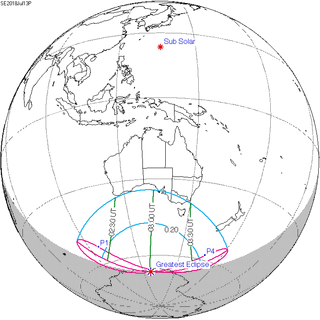 Map | |
| Type of eclipse | |
| Nature | Partial |
| Gamma | -1.3542 |
| Magnitude | 0.3365 |
| Maximum eclipse | |
| Coordinates | 67°54′S 127°24′E / 67.9°S 127.4°E |
| Times (UTC) | |
| Greatest eclipse | 3:02:16 |
| References | |
| Saros | 117 (69 of 71) |
| Catalog # (SE5000) | 9548 |
A partial solar eclipse will occur on July 13, 2018. A solar eclipse occurs when the Moon passes between Earth and the Sun, thereby totally or partly obscuring the image of the Sun for a viewer on Earth. A partial solar eclipse occurs in the polar regions of the Earth when the center of the Moon's shadow misses the Earth.
Images
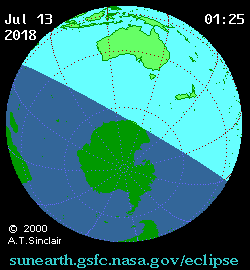
Animated path
Related eclipses
Solar eclipses of 2018-2021
Each member in a semester series of solar eclipses repeats approximately every 177 days and 4 hours (a semester) at alternating nodes of the Moon's orbit.
Note: Partial solar eclipses on February 15, 2018, and August 11, 2018, occur during the previous semester series.
| Solar eclipse series sets from 2018–2021 | |||||
|---|---|---|---|---|---|
| Ascending node | Descending node | ||||
| 117 | July 13, 2018 Partial |
122 | January 6, 2019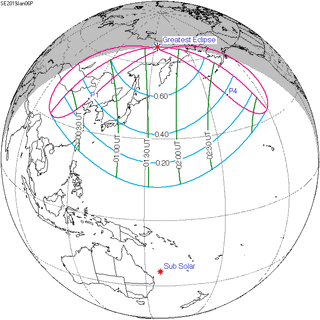 Partial | ||
| 127 | July 2, 2019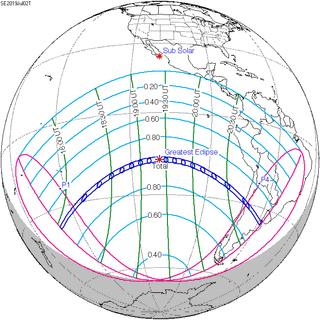 Total |
132 | December 26, 2019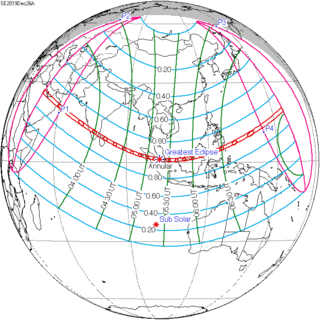 Annular | ||
| 137 | June 21, 2020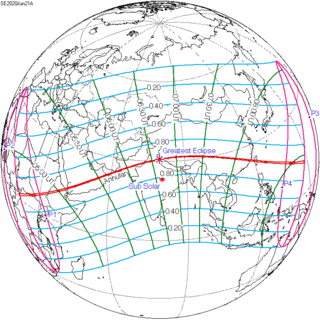 Annular |
142 | December 14, 2020 Total | ||
| 147 | June 10, 2021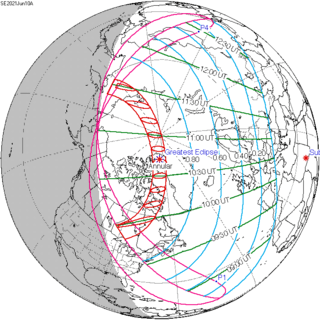 Annular |
152 | December 4, 2021 Total | ||
References
| Wikimedia Commons has media related to Solar eclipse of 2018 July 13. |
External links
This article is issued from Wikipedia - version of the 1/15/2016. The text is available under the Creative Commons Attribution/Share Alike but additional terms may apply for the media files.
